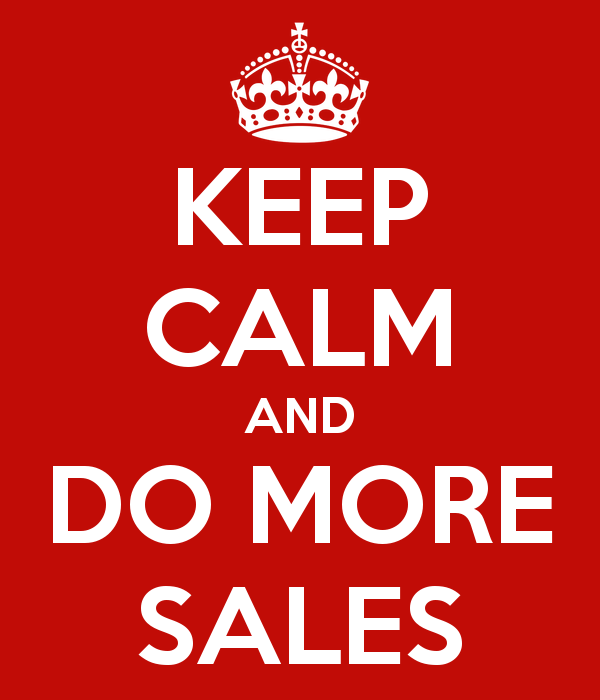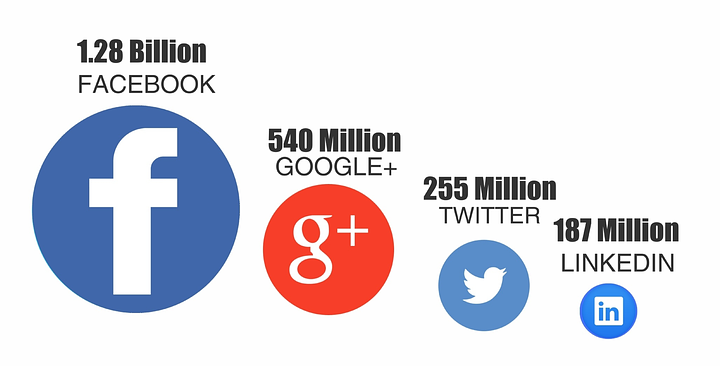- About us
- Services
- Projects
- Coaching
-
News
Your Marketing Plan, StrategyBefore TacticsOne of the key mistakes made by most business owners, CEOs or marketing executives is hiring a firm or firms that specialize in a specific tactic (website design, search engine optimization, PR or social media) without having a well-thought-out overall marketing strategy and plan for the firm. Even if you hire an inbound marketing firm, starting tactics without a solid plan in place is a recipe for disappointing results. Before you jump in and start working on the marketing tactics for your company, you MUST create an overall marketing strategy and marketing plan that addresses some key areas.Buyer Personas – Who do you want to attract with your marketing? Who do you want to repel? You might want to ONLY work with large corporations and you might NOT want to work with individuals. This business strategy has to be reflected in your marketing. Creating target personas (detailed bios) for the people you want to attract to your firm is critical.TIP #1: Executing inbound marketing tactics without a solid marketing strategy and plan is one of the main reasons inbound marketing programs fail to deliver significant improvements in lead generation.Voice & Tone – What do you need to say to those people to get them interested in your firm? Knowing how to connect and engage with your target personas is critical. If you skip this step, you run the risk of spending money on marketing that never attracts a single prospective client for your firm. You need to create messages that emotionally connect with your target clients.Differentiation – What do you do that’s different than all the other companies in your market? What makes you stand out? What makes you remarkable? Yes, it’s safe to look like the rest of your competition but if you want to attract new leads for your business – you have to look, sound and act differently than your competition.Tactic Mapping – What tactics do you need to implement to get to your goals? You need to have a broad overview of everything you need to do, when you need to do it so that you meet your new business acquisition goals. You need to have editorial calendars, schedules and detailed plans for each of the multiple tactics in an inbound marketing program.Budget – How much investment is required? A marketing plan highlights a budget for the year and directly correlates that budget to expected results. Without this, you are just flying blind.A little more on personas – One of the most important parts of your marketing strategy and plan is the creation of target market personas. Why? If you don’t intimately know who you are marketing to, you will never achieve your lead goals. Personas are more than just demographics. They include as much intelligence on your target market as possible. For instance, what blogs do they read? What email newsletters do they subscribe to? What trade associations or industry magazines do they read? What conferences or trade shows do they attend? What LinkedIn groups are they members of? Who do they follow on Twitter? Knowing these details about your prospects influences almost all of the marketing tactics included in your inbound marketing plan. It impacts the creation of your website, your social media sites, your blogging, email marketing and content creation effort – the more detailed your personas, the better your results.TIP #2: If you’re not keeping score, you’re just practicing. Establish the number of leads your business needs to meet its new revenue objectives and then track performance against those lead goals daily, weekly and monthly.A little more on goal setting – What gets measured, get’s done. Marketing has historically suffered from ambiguous goals, like getting your name out there or building your brand. Today, marketing has only one goal: generate leads for your business. But how many leads and in what time frame? Your marketing must be aligned with your business goals. Start with your high level goals. What are your revenue objectives for the year? If you need to add $1 million in incremental revenue to the top line and each new client is worth $10,000, then you need 100 new customers to hit your goals. If you have a 20% close rate on all sales opportunities, now you need 500 sales opportunities. If only 50% of the leads are actual sales opportunities, then you need 1,000 leads over the course of the year. If you don’t know these KPIs (key performance indicators) for your business, then getting to know them should be your first priority. Once you know how many leads you need, now you need to figure out how much website traffic is required to generate 1,000 leads. This is where inbound marketing shines. Each inbound marketing tactic in your strategic marketing plan contributes to website traffic, and overall lead generation. Welcome to marketing in 2013. I hope you see how important marketing strategy is to the performance of an inbound marketing program. Without it, you are virtually driving your car blindfolded.Read MoreTopics: Sales and Marketing, sales, sales leads, Leads, real estate, marketing, Roman Badnarchuk, lead generation, Sales Training, N5R Sales Training, marketing agency, Top condo sales trainers, 2014
Yong Kim, The CEO of Wonolo elaborates on the unspoken but known magic formula of success for students pursuing a business career. I don’t blame them as I fell into this same path in my early career. At the time, I recall the utter need and desperation to follow this algorithm, as I believed this was the only path to success.Yet, if I could do it all over again, I would take a completely different approach. What would I do now? I would get a sales job. In fact, it does not matter what type of sales - insurance, cars, cell phones, cosmetics… I would take any opportunity that would teach me how to prospect, qualify, pitch, close and manage customers. And here is why.
The most important skill in business is sales
If I look at some of the most successful leaders in business, one undeniable common thread they all have is that they are incredibly gifted at selling. They know how to create and share the story with their customers in a way that is difficult to resist. Customers will say, “Wow, I really believe in this person. I want in.”
I am not just talking about selling a product or a service, but selling a vision. Ultimately, you have to get people to buy into you, follow you, and choose to support you. So, you have to sell not only to external customers, but to investors, your internal teams and new hires once you have your own team to lead. Building a strong team culture, with enthusiastic and excited employees requires selling your vision of why the work is important to them and to your customers. So, it’s critical to perfect selling, in all areas.
The most difficult skill to master in business is sales
Sales is not just about closing deals. It involves careful strategy around how to identify and prospect target customers. Then, once you have successfully reached out to key customers and have gotten their attention, it requires thorough preparation of your pitch. What are your customers’ unique pain points and how can you help offer solutions? This courtship may take a few days to weeks, if lucky, but often times, it can take up to many years. After successfully convincing them to trust you and your product/service, your job doesn’t end there. The goal is to maintain a strong relationship, and keep your customers happy for many years to come.
Each part of the sales process presents unique challenges and requires a multitude of skill sets to master. Along the way, you learn how to be mentally strong; being diligent, persistent and patient are core traits of being excellent at sales. So, the earlier you start, the more time you have to learn and master.
The most transferable skill in business is sales
Various researches have estimated that people switch jobs about 7 times in their career. Though the validity of this number has often been argued, one thing is clear; no one will have the same job, same role forever. Case in point: people switch jobs at some point even within the same company. Accordingly, roles and responsibilities associated with new jobs change, requiring a different set of capabilities. Regardless, there is one skill set that is required in any job - effectively communicating with both internal and external members, collaborating across cross functional teams and delivering results. These are fundamental skills naturally trained and developed in sales. In fact, if you look at the background of top executives at successful organizations, many of them started their career in sales and continued to prove their leadership in different roles.
I made my first cold call when I was in my mid thirties and only after I started my own startup. Many long months went by without a single sale, even after making hundreds of cold calls and sending out thousands of emails. I felt hopeless. Even with my MBA degree, prior experience in investment banking and consulting, I could not get a single new customer. It was a very painful truth to swallow - I did not know and had never learned how to sell.
Fast forward several years (and I have gotten better at it), I am still learning. I look back at the many years of missed opportunity to learn the art of selling and wish that I could have started the process much earlier in my career. It’s been some of my most challenging times, but sales has taught me so many things about business in a holistic way. Study your prospective clients, build relationships for the long term, nurture relationships once formed, never give up, etc.
Most importantly, it helped me become a better listener and more empathetic to my customers’ needs. Truly, having to work so hard to get one customer and seeing that that person has made a conscious decision to say yes, to give you a chance, and to choose to spend their resources on you, makes me that much more passionate to serve my customer.
So, if you are debating between Goldman Sachs or McKinsey, think again and get a sales job.
Read MoreTopics: Sales and Marketing, sales, sales leads, Leads, real estate, marketing, Roman Badnarchuk, lead generation, Sales Training, N5R Sales Training, marketing agency, Top condo sales trainers, 2014
Measuring PerformanceYou might be tempted to sit back and relax once your campaign has launched. But in order to understand how your campaign is performing (and how you could potentially improve it) you should monitor key campaign metrics in an analytics tool like Google Analytics.
So, what metrics should you be paying attention to?
Here are the basics:
• Views: how many people have checked out your landing page
• Downloads/registrations: how many people lled out your landing page form inorder to download content/register for an event
• New contacts: how many new contacts has the campaign added to your database
• Conversion rate (downloads/registrations): % of landing page visitors who end up downloading content/registering for an event
• Conversion rate (new contacts): % of landing page visitors who download content/ register for an event and become new contacts as a result
• Ensure that your landing page is mobile-optimized (learn more).
• Use target keyword(s) in the page title.
• Keep the URL structure clean. For example: o er.yourwebsite.com/free-marketing-guide = good
o er.yourwebsite.com/id=4673007niner/free-marketing-guide-07-17-15 = bad
• Write a compelling meta description. (Note: this won’t a ect rankings, but it can help encourage searchers to click on your website’s result, so make it count!)
In order to compare the performance of two or more campaigns, establish and stick to a speci c time duration that you can use for all of your measurements.
For example, if one campaign launched last January and another launched last March, comparing their total views, total downloads, etc. would be misleading: the rst one’s had more time to perform. To account for this, simply decide on a timeframe (for example, from a campaign’s launch date to 2 weeks after launch) and use that for every metric you calculate.
Sound a bit complicated? At HubSpot, we’re able to keep tabs on all of our campaign metrics with the help of Google Sheets. Here’s a mock-up of what one of our quarterly campaign performance spreadsheets might look like:
Need to present your ndings to a coworker or third party? Select your data and use Google’s Chart Editor (Edit > Insert > Chart) to create a chart, graph, or other visualization.
Once a campaign has launched and you’ve collected data on its performance, it’ll be time to run a “post-mortem’ meeting with your coworkers and collaborators. You can do this in-person, via Google Hangouts or Gmail, or even in a Google Doc that everyone can update or comment on.
Here are some of the questions you should answer and explore:
• Which sources (organic, paid, social?) drove the most tra c to your campaign’s landing page?
• Which sources drove the most-quali ed (i.e., most likely to convert) tra c?
• Which sources drove the least amount of/least-quali ed tra c?
• If you were able to launch the campaign again, what would you do di erently? What would you do the same?
 Read More
Read MoreTopics: Sales and Marketing, sales, sales leads, Leads, real estate, marketing, Roman Badnarchuk, lead generation, Sales Training, N5R Sales Training, marketing agency, Top condo sales trainers, 2014
Promoting To Your AudienceIt’s one of the most exciting moments in the lifecycle of a marketing campaign: the launch.
If you’ve been methodical in your planning and executing (with the help of Google Calendar and Google Drive, among other tools), then the launch of your campaign should go smoothly.
In addition to promoting your campaign externally, be sure to promote it internally as well. At HubSpot, we send out a noti cation email (which anyone at the company can sign up to receive) to let coworkers know when a new campaign has launched.
In addition to providing talking points and links to the campaign’s landing page, be sure to include a link to that Google Drive folder you created with all of those neatly organized promo images. This will make it easier for your coworkers to share the campaign with their networks.
Launching your campaign is an important milestone. But remember, in order to get long-term value out of your e orts, you can’t take a one-and-done approach to promotion.
One of the best ways to get sustained value from a marketing campaign? Search engine optimization (SEO): the practice of improving the ranking and visibility of your website’s pages in organic (unpaid) search engine results.
If the goal of your campaign is lead generation, your campaign’s landing page should be the focus of the majority of your SEO e orts. (You should also spend time optimizing blog posts that link to that landing page.)
Here are some of the most important SEO tasks for your checklist:
• Ensure that your landing page is mobile-optimized (learn more).
• Use target keyword(s) in the page title.
• Keep the URL structure clean. For example: o er.yourwebsite.com/free-marketing-guide = good
o er.yourwebsite.com/id=4673007niner/free-marketing-guide-07-17-15 = bad
• Write a compelling meta description. (Note: this won’t a ect rankings, but it can help encourage searchers to click on your website’s result, so make it count!)
Thinking for the long term, you should also spend some time scheduling social posts for the weeks and months following the launch. Think of new angles or insights you can highlight each time so you’re always sharing something fresh with your audience.
If you’re looking to give your campaign a little boost, you always have the option of purchasing search ads around speci c keywords via Google AdWords. This will allow you to show ads to users who use Google to search for keywords related to the main themes of your campaign.
For best results, create alignment between the keywords you bid on, the copy in your ad, and the copy on your landing page (your landing page is where you should be sending people who click on your ads, FYI). If your ad promises something that your landing page fails to deliver, people who click-through will be likely to bounce; and you could end up losing out on potential leads and customers because of it.
Pro tip: make the Google AdWords Keyword Planner your best friend early in the process. The tool will allow you to see and compare the competitiveness (and cost) of purchasing ads around di erent keywords and keyword variations.
And remember: your search ads will only yield results so long as you continue to pay for them. In the long run, investing in SEO and organic audience-building (e.g., through engaging with people on social media) will have a more positive e ect on your campaign.
 Read More
Read MoreTopics: Sales and Marketing, sales, sales leads, Leads, real estate, marketing, Roman Badnarchuk, lead generation, Sales Training, N5R Sales Training, marketing agency, Top condo sales trainers, 2014
How To Plan Your CampaignIdeas for marketing campaigns can come from a variety of sources. Sometimes, for example, there’s a speci c request from another team, while other times it’s your own research and analysis that leads you to a topic.
Regardless of where your campaign ideas come from, you should store those ideas in an easily accessible location. You and your coworkers should be able to regularly add to and comment on those ideas.
Here’s what to do:
1. First, open Google Drive and create a “master” folder for your campaign where you can store all your campaign assets.
2. Next, create a new spreadsheet. Name it “Marketing Campaign Ideas” or something similar.
3. Create separate columns for the following criteria and label them accordingly: • working title (e.g., “How to Stay Organized”)
• format (e.g., ebook, webinar, video)
• persona (e.g, Renter Rick, or Buyer Beth)• goal (e.g. lead gen, page views, social buzz)
• notes (where you can explain aspects of your idea in more detail)Once you’ve nailed down the speci cs of your marketing campaign with the help of Google Sheets, it’ll be time to add that campaign to your team’s campaign launch calendar in Google Calendar.
At HubSpot, we can see all of the launch dates for all of our upcoming campaigns— including the precise times for things like webinars, Twitter chats, and contests—all in one, shared calendar.
For a high-level look at what marketing assets and events are coming down the pipe, this calendar is indispensable.
However, to make sure you—as an individual marketer—are keeping track of your speci c responsibilities for a campaign, you can create personal calendar reminders as well.
For example, if you were creating an ebook, you could create calendar reminders for when the rst draft of the ebook’s copy is due, when the nal draft of the copy is due, when the rst draft of the ebook’s design is due, and so on.
Of course, setting all of the milestone dates and deadlines associated with planning a marketing campaign requires a ton of communication.
Google Hangouts is an easy-to-use solution for hashing out the details of a campaign with your coworkers, even if some of those coworkers are working remotely.
At HubSpot, we use our campaign planning Hangouts to answer questions like...
• Who is responsible for X task?
• Does anyone need help with a task?
• Does everyone agree with the timeline / nd it reasonable? • Are there any potential roadblocks that could delay launch? • Do we have a backup plan if X doesn’t work out?At the end of every campaign meeting, we use Gmail to send out a meeting recap, which highlights all of the key takeaways from the meeting as well as what decisions were made.
For complex, multi-channel campaigns (which perhaps include some advertising spend), now would be a good time in the process to create a promotional plan in Google Docs. What should you include in the document? For starters, you can copy and paste all of your meeting recap notes. You’ll also want to answer the following:
The best part about doing this in Google Docs is that you can easily share the planning document with your coworkers and collaborators. And they can either edit the document directly or leave comments to the side. (You can control whether someone is able to view, comment, or edit a document via the share settings.)
Through maintaining this “living” document, you can have ongoing virtual meetings throughout the creation, promotion, and measurement phases of your campaign.
 Read More
Read MoreTopics: Sales and Marketing, sales, sales leads, Leads, real estate, marketing, Roman Badnarchuk, lead generation, Sales Training, N5R Sales Training, marketing agency, Top condo sales trainers, 2014
Just after your first interaction with your prospect is it critical to add them on all forms of social media. At this point you are still fresh in their minds, so it won’t come across as bothersome, and it will give them a chance to further explore your business. It is through social media that you can express personality, successes and other updates.
Add them on Facebook, Twitter and LinkedIn.
The opportunities that arise from social media are potentially limitless. Marketing through social media can be a very powerful tool. The more people you connect with and the more times you post you drive up your chances of connecting with new leads. Keeping on top of your social media campaign can help you gain followers leads and brand advocates. You are aiming for the most exposure possible and in turn it will increase your website traffic.
Read MoreTopics: blog, Leads, prospect, social media, marketing, n5r, social
Shopping manuscripts to publishers is no different than trying to do business with a client. Imagine you get into an elevator with an editor, or an agent. You have 30 seconds to sell them your book before the elevator reaches their floor.
Read MoreTopics: sales, marketing, credibility, selling, elevator pitch, customers
Tips on How to Sell Real Estate to Millennials
More than any other previous generation, millennials have grown up using technology. They want information fast and are always on top of the latest trends in technology. When looking for real estate, their first step will be to go online. Here are our tips on how you can cater to these first-time home buyers.
Read MoreTopics: social media marketing, real estate, marketing, Webinars, email campaign
Top 5 Online Marketing Tools for 2015
Read MoreTopics: marketing, online marketing, digital
Your Email to Subscribe
Archives
- February 2016 (56)
- August 2016 (43)
- November 2014 (36)
- January 2016 (33)
- September 2016 (31)
- October 2016 (31)
- December 2011 (30)
- November 2012 (29)
- December 2014 (26)
- August 2015 (25)
- July 2013 (24)
- September 2015 (24)
- May 2011 (20)
- November 2011 (20)
- June 2016 (20)
- January 2011 (19)
- September 2011 (19)
- June 2012 (19)
- October 2015 (19)
- March 2013 (18)
- April 2013 (18)
- January 2013 (17)
- July 2016 (17)
- January 2012 (16)
- February 2012 (15)
- July 2015 (14)
- November 2016 (14)
- November 2010 (13)
- December 2010 (13)
- June 2011 (13)
- October 2011 (12)
- December 2012 (12)
- February 2013 (12)
- January 2015 (12)
- January 2017 (12)
- May 2013 (11)
- August 2011 (10)
- March 2012 (10)
- June 2013 (10)
- December 2016 (10)
- October 2014 (9)
- April 2011 (8)
- May 2012 (8)
- September 2013 (8)
- July 2012 (7)
- December 2013 (7)
- May 2016 (7)
- February 2011 (5)
- July 2011 (5)
- April 2015 (5)
- March 2016 (5)
- November 2017 (5)
- May 2019 (5)
- July 2010 (4)
- March 2011 (4)
- August 2013 (4)
- February 2015 (4)
- August 2010 (3)
- September 2010 (3)
- August 2012 (3)
- November 2013 (3)
- February 2014 (3)
- May 2015 (3)
- October 2010 (2)
- January 2014 (2)
- July 2014 (2)
- March 2015 (2)
- December 2017 (2)
- April 2012 (1)
- May 2014 (1)
- November 2015 (1)
- March 2017 (1)
- July 2017 (1)
- February 2018 (1)
- October 2021 (1)










